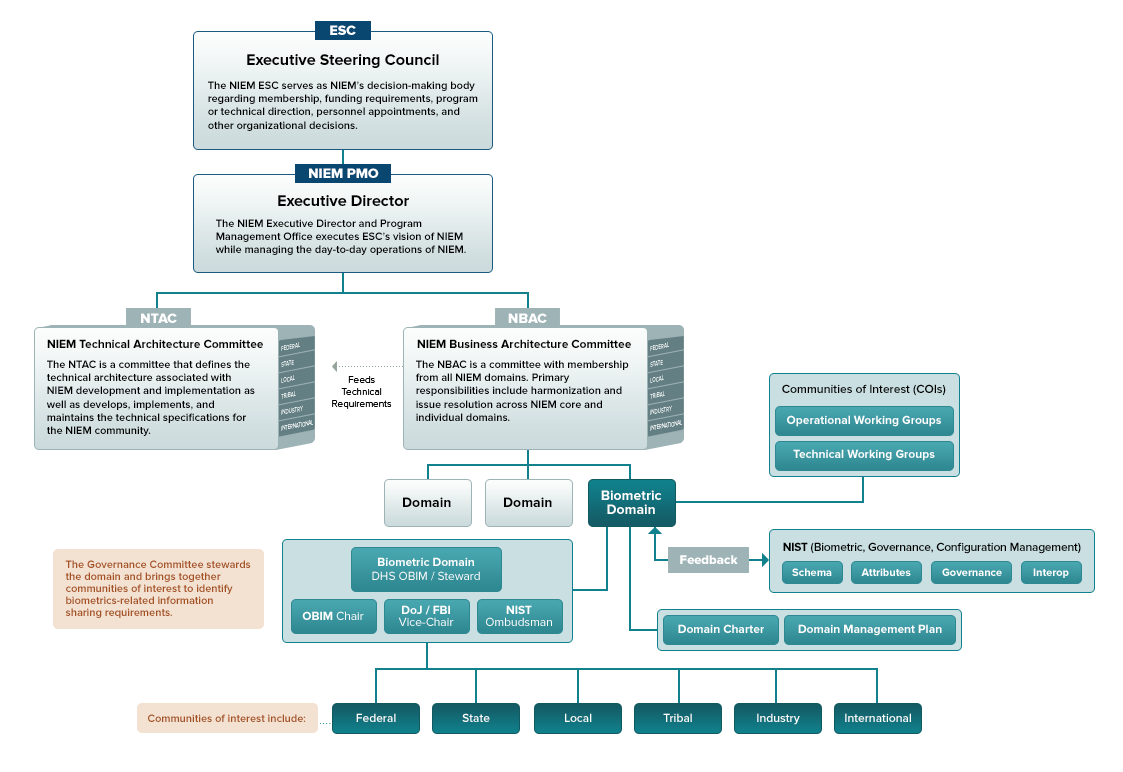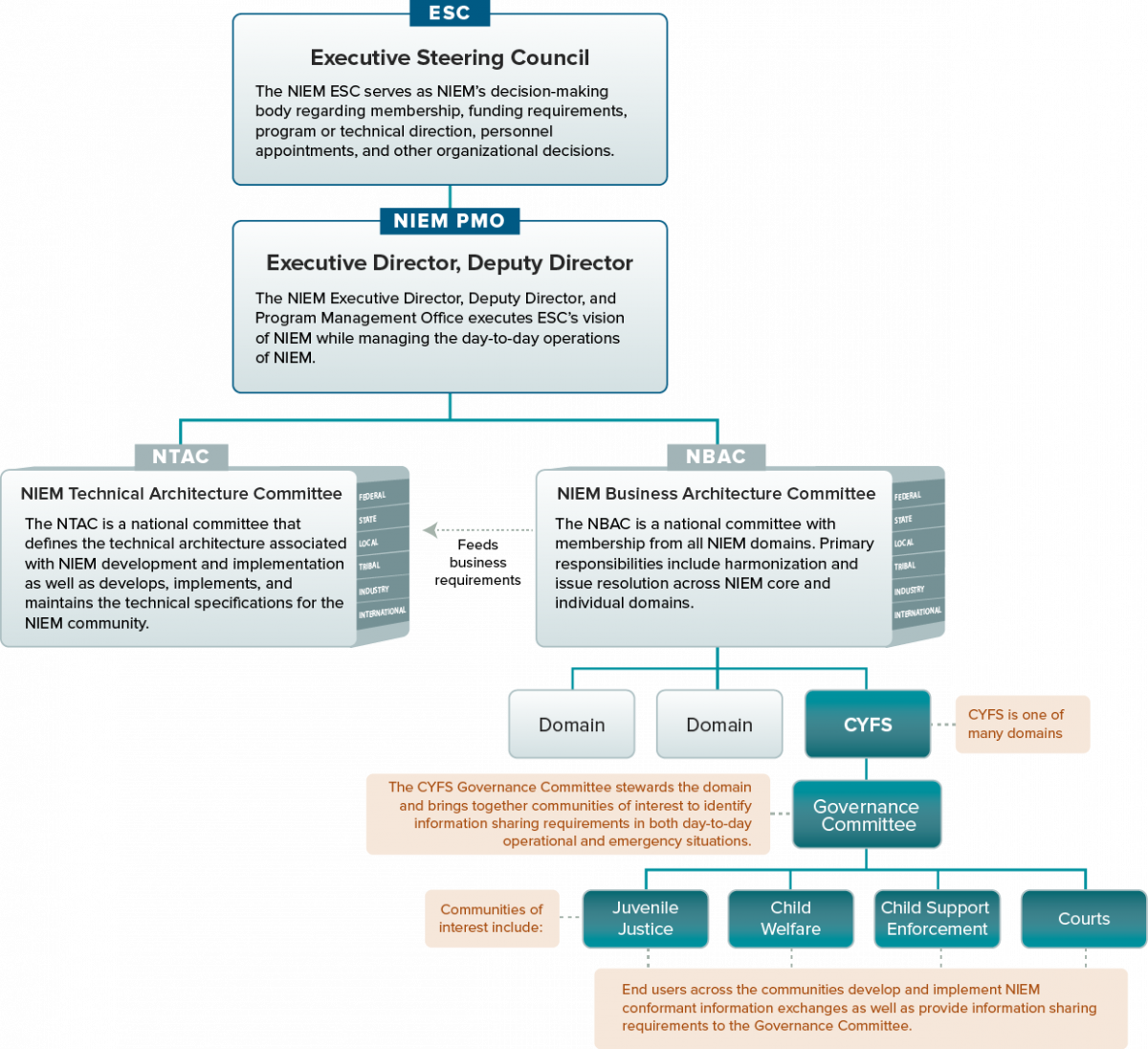Subcommittee Governance
Subcommittee governance is an important aspect of overall NIEM governance.
Stewardship
All NIEM subcommittees are led by a subcommittee steward that is responsible for the subcommittee’s model content, governance, and maintenance. A subcommittee steward may collaboratively work with a team of volunteer subject matter experts that collectively represent any involved Communities of Interest (COIs). Stewards and, if applicable, governance committees, manage their subcommittee and bring together domain stakeholders to identify information exchange business requirements.
Content Management
Individual subcommittee's manage their portion of the NIEM model and work with other NIEM subcommittee's to collaboratively identify areas of overlapping interest (known as the harmonization process). As subcommittee stakeholders develop and implement NIEM-based exchanges they provide new or updated information exchange requirements to the subcommittee steward. Content updates can happen at any time, and are then incorporated into the next NIEM release (major or minor) for reconciliation and official publication.
Community Participation
The use of NIEM accelerates collaboration in and across communities. Subcommittee's typically consist of participants and end users across federal, state, local, tribal, international, and industry organizations. These members may take part in subcommittee-specific working groups to resolve issues pertinent to their community. Subcommittee's also participate in broader-scale NIEM committees, such as the NIEM Business Architecture Committee (NBAC), the NIEM Technical Architecture Committee (NTAC), and the NIEM Management Office (NMO).
Governance
There is no one-size-fits-all solution to subcommittee governance. Each subcommittee represents a broad and, at times, diverse group of individuals and organizations. Subcommittee governance should be tailored to address these stakeholders.
However, there are several activities that are part of governance that are applicable to all. For example, fair and adequate representation, dispute resolution, and continuous communication between all stakeholders are important for community success. Also, to ensure that they remain independent and self-sustaining, established NIEM subcommittees may create and maintain a governing document, such as a charter, that outlines roles and responsibilities, organizational structure, dispute resolution frameworks, and a management plan that details the activities of the subcommittee.
Example: The Biometrics subcommittee
The Biometrics subcommittee provides an excellent example of how to formalize subcommittee governance. The governance framework below illustrates how the Biometrics subcommittee serves the needs of the Biometrics community.

Another example: The Children, Youth, and Family Services (CYFS) subcommittee
The NIEM Children, Youth, and Family Services (CYFS) subcommittee supports timely, complete, accurate, and efficient information sharing to improve outcomes for children and youth whose circumstances make them particularly vulnerable.
The subcommittee brings together communities of interest to identify information exchange business requirements.
The CYFS communities of interest include but are not limited to: Juvenile Justice, Child Welfare, Child Support Enforcement, and Courts. End users across the communities develop and implement NIEM-based exchanges and provide new or updated information exchange requirements to the domain governance committee.
The subcommittee governance committee determines who represents the subcommittee on the NBAC.


